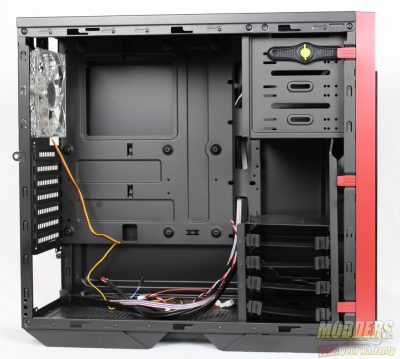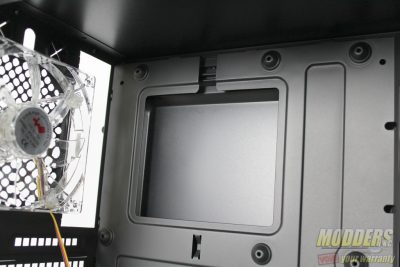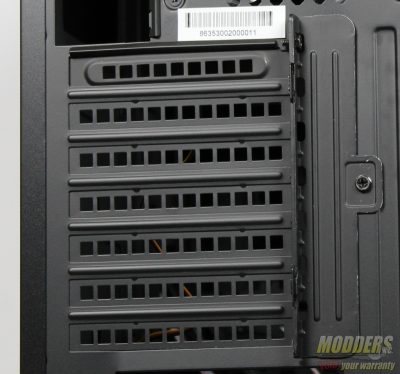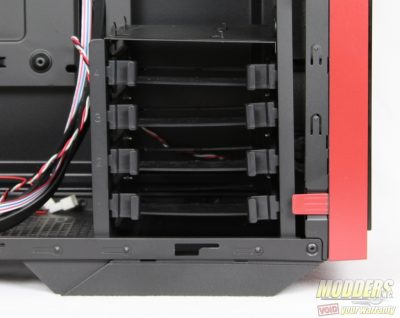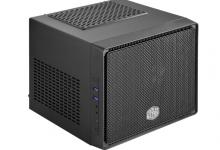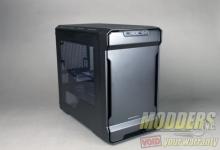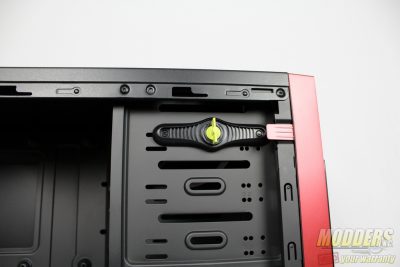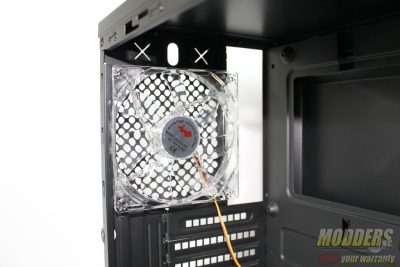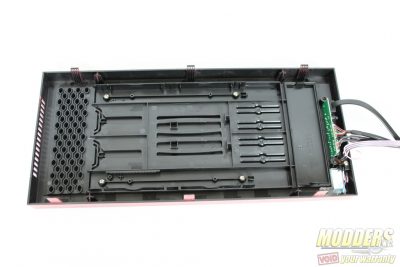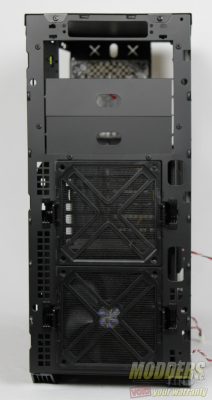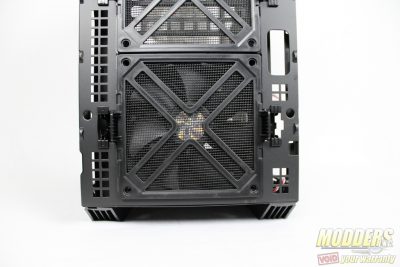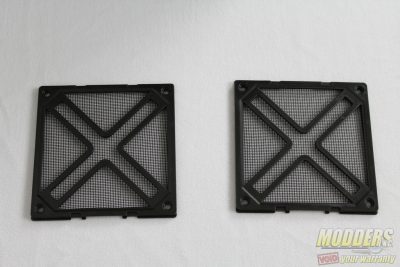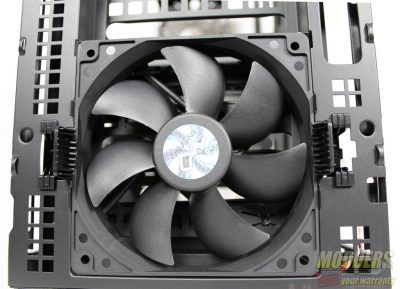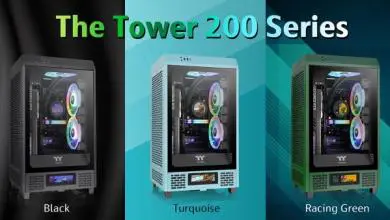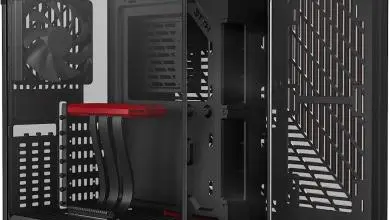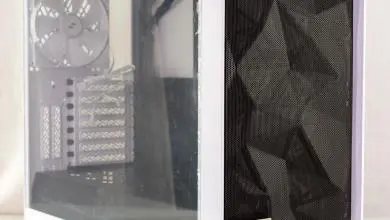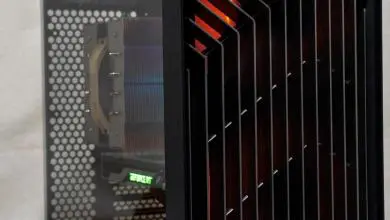InWin 503 Mid Tower Case Review: Everything you need on a budget
A Look Inside
Upon opening the case, I was delighted to see two features InWin focused on when designing the interior: There is large CPU cutout on the motherboard tray and there is a long open space for even the largest graphics cards. If you happen to have spent too much of your budget on a large GPU and with little to spare for a case over $60, then the InWin 503 would be one to consider. The 503 not only featured a large cutout for easy CPU back plate installation and the protruding clear-panel allows for higher than average heatsinks. InWin’s website boasts 160mm (6.2 inches) clearance for heatsinks and 408 mm (16 inches) for GPU clearance. This massive amount of clearance comes at a cost of being able to add excessive amounts of hard drive and optical drives. This is a great trade-off many end users would prefer. I will only be putting in a Cooler Master 212 EVO and GTX 770 for demonstration purposes and these really felt like tiny parts once placed inside this case.
As I mentioned earlier the standoffs are already in the case for ATX and Micro-ATX so this is a nice touch. Installing a motherboard with cooler went pretty smooth given the ample space. Upon closer inspection of the expansion ports, I noticed all of the openings were breakaways. This could be a problem you installed an extra video card or sound card and decided to remove it as the now empty slot would leave a hole in the back of the case. The InWin 503 comes with 7 expansion ports so there is ample room for multiple expansion cards and/or video cards.
The hard drive bay area seemed to bother me a bit. All of the drive caddies seem a bit slanted in one way or another and after installing a drive, this slant persisted. This feels like the side effect of cheap parts. In addition to the strange shape of the hard drive caddy, I noticed the pins used to secure hard drives can sometimes scratch the hard drive upon removal. This is a small gripe though.
The InWin 503 has only one 5.25 inch optical drive bay that is can be accessed outside the case. This bay also has an optional tool-less installation. On the rear of the case is the 120mm red led fan with a 3 pin power connector. This fan is used primarily for passive cooling and lighting up the interior to show off that massive GPU and CPU cooler that will inevitably be put into the 503. The total power draw for this fan is 3.6 watts. Using this with an ALC cooler in a push pull configuration may cause airflow restriction.
Near the front of the case you’ll notice latches for removal of the front panel. The plastic in the front panel feels fairly sturdy. Behind the front panel we see 2 breakaway panels for the 2 additional 5.25 inch bays. This seems pointless as the those bays will never see the light of day while the front panel is on.
Underneath the optical drive are 2 optional front intake fans. One fan is already included courtesy of InWin. The intake filters are pretty good quality. It will be a chore to remove the front panel to get to the fan filters, but it could be worse. The included fan is much more powerful than the rear case fan at 26.4 watts.
